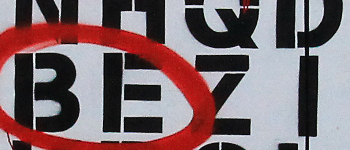There is no shortage of books about literary criticism and critical theory. There are also plenty of popular how-to guides for writers. Poking about Blackwell’s Bookshop the other week, though, I came across Story Logic and the Craft of Fiction by Catherine Brady. Brady is a professor of creative writing at the University of San Francisco. This is a rare hybrid: an academic work aimed at creative writing students. As such it’s not a light read. I think it more than repays the effort it demands, though. From it, here are some things about ambiguity and the hidden in fiction I (think I) learned this week.
Good stories are ambiguous
Ambiguity lies at the heart of literature. Brady is talking primarily about literary fiction here, where conclusions are rarely drawn tight. However, even in a genre story, you should leave work for your readers. Fiction is a partnership between writer and reader, after all.
If you want to find good examples of unstable meaning in popular story, take a look at grown up TV dramas like The Sopranos and The Wire. Is Tony Soprano a thug or a lovable gangster? A family man or a philanderer? No episode of The Sopranos ended with a pat conclusion. Instead, the viewer was left with the uneasy feeling that everything she knew about the story might be wrong.
There’s a tension between the clear and obvious things the viewer has seen. A kiss, a murder, an argument about a car. And the murky world of meaning. That tension is the interesting part of the story, it’s the part that lingers in the mind, and carries on cooking long after the closing credits.
The duty of a story is to raise questions, not to provide answers
It may be the job of a polemic, or a piece of investigative journalism to lead a reader to a clear set of answers. In writing fiction you’re freed of that task. Instead you provide the evidence, and then let the reader decide:
Like a judge, the writer remains silent at critical junctures—but not silent on which information is relevant to judgment
And it’s here that we cheat of course. We skew the case. If we’re smart, though, we don’t nail the conclusion down too tight. A story with no room for interpretation is presented to the reader pre-suffocated.
The gaps are as important as the scenes
A plot is a series of actions. First this happens, and then that happens. But in any plot there’s much more gap than action. Some of that omission is irrelevant, of course. There’s a lot of teeth cleaning and TV watching that doesn’t get described. But there’s also meaning implicit in much the writer leaves out.
Imagine a scene in which a man is happily setting out for a night on the town. He’s slapping on aftershave, and dancing to something silly on the radio. He’s making plans on the phone. And now imagine a scene in which the same man is disheveled, and drunk, and sitting on the edge of a railway bridge as dawn breaks. He is bleeding from a cut on his face. Put those scenes together. Which part is the most important? The first scene? the second scene? Or the omission that sits between them?
A gap in a story implies a causal relationship. Often that will be uncomplicated, a simple matter of omitting unnecessary detail. But it’s the troubled and troubling gaps that can help make a story. It’s in these gaps that the reader must consider.. what happened, and what it means. The story becomes a complex thing, without the need for complexity on the page.
Separate action and consequence
One gap we all know about in fiction is the cliffhanger. The most obvious example of this is the Doctor Who or Dick Barton moment. The hero is moments away from obliteration by a fiendish zap gun, so let’s end the episode here. Often, though, the cliffhanger does not reside in the question “what will happen next?”. Instead it calls up the question “what will be the consequences of this unexpected event?”
When Jane walks in on Peter garotting the family dog, the event has already occurred. It’s a done deal. But we’re still hooked. We want to know how Janet will react, and what it was that drove Peter to this drastic action in the first place.
Brady suggests you can take this a stage further, though, by omitting the immediate consequence altogether. Writing about Faulkner’s Intruder in the Dust, she says:
[The wrong body is found in a grave.] An amateur would have dwelled on the characters’ reactions at the gravesite, most likely having them address the questions in the reader’s mind and worry about the next step in their thwarted effort, draining off dramatic momentum rather than banking on it. What we don’t know yet keeps us hooked, so Faulker skips over their reactions and in chapter 5 jumps to the moment when Aleck, Chick, and Miss Habersham return to town, the white space emphasizing that their discovery compels further action and that it’s underway.
So, after Jane discovers Peter throttling the dog, rather than stay with the confrontation we might instead find ourselves at a doctor’s office, with the couple barely talking to one another. The reader will get her reveal soon enough, but not quite yet. We can spin it out, and we can let the mystery animate the ongoing action. Brady again:
The really developed action of a novel occurs before or after decisive action, in the lead time or the lag time between literal revelation and its emotional cause or consequence..
A story is two stories
Every story is perceived first at the literal level. This is where things happen, and we see them happen. But there is also a secret, implicit, story beneath this surface. This figurative level is the place of ambiguous meanings. Peter strangles the family dog. We find out later that this criminal act was provoked by a row about money and vet bills. Well that’s that, right? Clearly not. There’s a lot more to discover. It’s a detective story. There’s something pretty rotten at the heart of this relationship, and we’re only seeing the symptoms here. As Brady says:
…literal events enact the implicit tension of the hidden story.
The extent to which the hidden story remains hidden and the extent to which it is obliquely related to the visible will depend upon genre to a certain extent. A literary story will tend to emphasize ambiguity. A one to one relationship between portrayed events and submerged meaning is seen as mechanistic. With meaning pinned down, emotional and thematic complexity is reduced. With meaning open, a reader might use the literal story to conjure a number of different, even contradictory, hidden stories.
This can leave literary stories, especially literary short stories, open to the accusation that they are wilfully obscure. It’s true, I think, that in reading a story by Raymond Carver one has to understand there are conventions at work. It’s a little like the hidden rules of cryptic crosswords or Mornington Crescent (don’t let’s get started on that one though).
In a genre piece the hidden story is likely less buried or ambiguous, but it will be there. Good characters have motivations that run below the surface. So when they act, they do more than careen from event to event. They are driven by deep needs and conflicts. These are revealed by their actions, and this forms the hidden story. As TV shows like Mad Men, The Wire, and even Battlestar Galactica have recently shown, popularity and accessibility are not incompatible with complexity. As Brady writes:
It’s harder to conceive of plot as engineering a relationship between a visible story and a hidden one, but it’s a lot more fun
The climax is the hinge for the literal and the figurative
By convention a story’s climax is tied to a reveal. It’s at this point that the figurative story is closest to the literal story. In literary fiction this connection often remains oblique. A less successful story may provide an epiphany in which a protagonist achieves complete understanding of some facet of themselves. Brady argues that this is too obvious,:
As you compose a first draft, try this strategy of telling one story in order to tell another. Approached in the most literal-minded way this will deflect your attention from making a point and force metaphorical meaning along an axis of tension. Instead of steering your character straight at realization (an epiphany too much on your mind), struggle with the machanics of making one story yank another to the surface. This will lead you to discovery. I can vouch for it.
So the climax should offer a moment of illumination, but it should not convert the figurative story into a literal one. In other words don’t give the game away. If you explain everything you close down room for doubt and interpretation. The figurative story dissolves and becomes literal, albeit retrospectively. This rather defeats the point.
Crucially, though, the moment of illumination should be transformative. The reader’s understanding of both the hidden story and literal story is altered at the moment of climax.
When the potent charges laid in the rising action fire simultaneously at the climax, a story offers a convincing surprise. In terms that do not require realization in the form of an epiphany, the climax can be defined as a decisive action that convincingly reconfigures what has come before; at this moment the visible story comes closest to the hidden, untold story.
The hidden story is itself changed at this moment, because we’re introducing new evidence to the puzzle, and this necessarily reconfigures our understanding of deeper meaning.
The climax in a genre story has a similar transformative role, although ambiguity is less important here. The actions of a protagonist result in a crisis in which his character is both tested and revealed. In understanding more about the character, we can then read back over the story from a new perspective.
Genre stories also tend to offer a twist which entirely transforms the meaning of the story that came before. This reveal is often cruder and more decisive than that offered by the literary story. The detective was the poisoner all along, the entire world is a computer simulation, and so on. There’s a satisfying click as the puzzle piece falls into place, and the picture we then see is not what we expected. Whatever the nature of this revelation, it transforms our understanding of the literal story, and unveils a whole new set of implications, offering us an alternative or substantially transformed hidden story. In effect we have to tell the story all over again in order to understand it.





